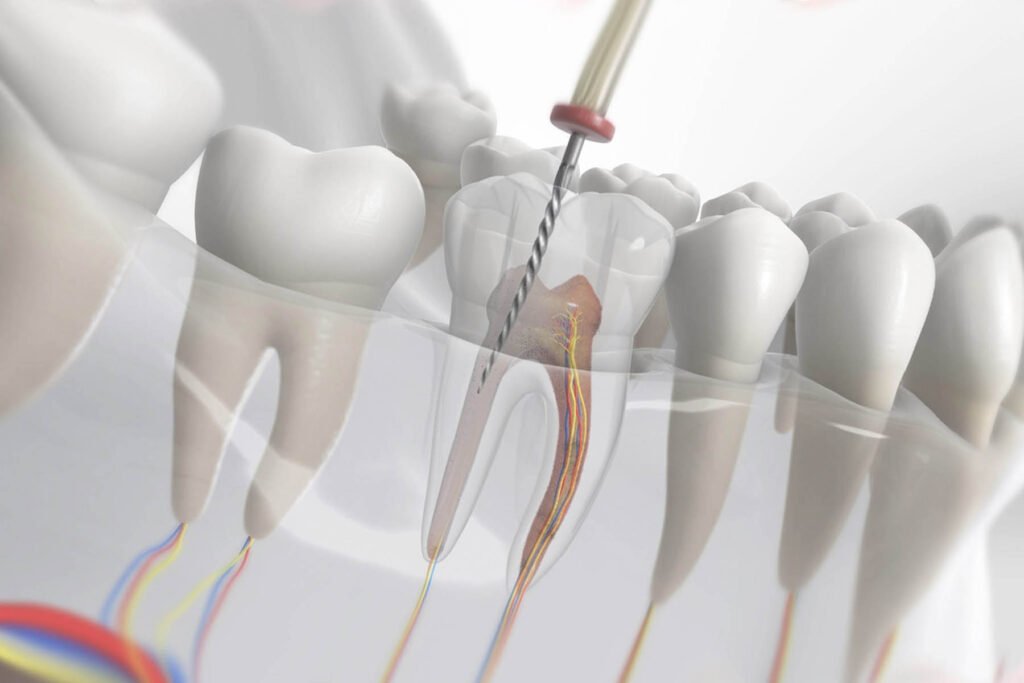
Aesthetic Dentistry covers a process in which some basic procedures are applied together with general dentistry in order to provide a healthy and beautiful smile. Dental Aesthetic treatment services include porcelain laminates, metal-free porcelain veneers or bridges, teeth whitening methods, onlay fillings, zirconium bridges or implant porcelain.
Tooth Whitening
Teeth whitening is one of the simplest and most well-known cosmetic procedures and is most effective on teeth with yellow, brown or orange stains.
Teeth can be whitened in the dentist’s office, or your dentist may recommend a home kit that includes a mouthwash that is tailored to your mouth. Both options use a form of hydrogen peroxide to remove stains and brighten teeth.
Porcelain Veneers
Porcelain veneers are specially made, nail-thick, tooth-colored shells that are bonded over your natural tooth. They are colorless and near-transparent and therefore give a natural appearance that matches the shape, size, color and length of the tooth they are bonded to. Porcelain veneers are the solution to problems such as discolored, worn or crooked teeth.
Bonding
Bonding is used to repair fractures and cracks in the teeth or to change the shape and color, especially in the front teeth. First, the color of the composite material to be bonded is matched to the color of your natural tooth. Then your tooth is lightly filed and a gel is applied to ensure that the bonding material adheres firmly. Once the composite material is applied, it is fitted to the tooth and hardened with high-intensity light. It is then polished for a natural look. Bonding is effective on small areas because larger areas are prone to fracture.
Inlay-Onlay Fillings or White Composite Fillings
Dark metal amalgam fillings need to be replaced as they wear down over time; they can also cause the tooth to crack and separate. Tooth-colored fillings are almost unnoticeable because they are so color-coordinated with your natural tooth. In addition, they are stronger and longer lasting than silver fillings.

Types of Tooth Filling
Amalgam Fillings
Amalgam fillings are also known as silver or metal fillings. Amalgam is obtained by reacting silver, tin and copper alloy with mercury. Mercury, which constitutes 45-50% of the mixture, binds the metals together to form a durable filling material. In the field of dentistry, amalgam has a history dating back 150 years.
What are the factors to be considered after the amalgam filling is applied?
After the amalgam filling is applied, the patient should not perform chewing function for 2 hours and should not chew hard things (hard foods such as nuts, nuts, peanuts) in that area within 24 hours following the application.
Composite fillings
Composite is an aesthetic filling material that is produced as an alternative to amalgam fillings, adheres to the hard tissue of the tooth with the help of a binding agent, has many color options and has been used for many years. Since it is aesthetic, easy to apply and does not undergo volume and shape changes in the mouth, it is preferred as a filling material for anterior teeth. Composite fillings have a major role in modern conservative dentistry. Composite applications are more economical than porcelain and gold fillings and require a single session.
The composite material used in composite fillings is not as hard as natural teeth. The material can be damaged by nail biting, hard foods and pen biting. The life of the filling is usually a few years, after which it can be repaired. In fact, the lifespan of the filling depends on your oral habits and the size of the filling.
After the tooth decay is removed, the color of the tooth is determined and a pasty composite material is applied. It is shaped, then the material is hardened with a light device. After the filling material has hardened, the height of the filling is taken and the anatomical shape is given to the filling with the finishing process. The material is then polished until it shines like the rest of the tooth surface. The procedure takes approximately 30 minutes to an hour to complete.
Porcelain Filling
Porcelain fillings (Porcelain Inlay or Onlay) are fillings with superior aesthetics and durability prepared in the laboratory. Compared to composite fillings, they are much more compatible with the tooth and neighboring teeth.
After the broken, decayed or old filled part of the tooth is removed, the remaining intact part is measured and sent to the laboratory. In the porcelain filling method prepared with a sensitive technology in a laboratory environment, the healthy tooth tissue in the mouth is not touched. With a few changes made on the tooth cavity opened in the normal filling, the tooth can be made ready for porcelain filling. In addition, these porcelains are the materials closest to the hardness of the tooth and most compatible with the gums.